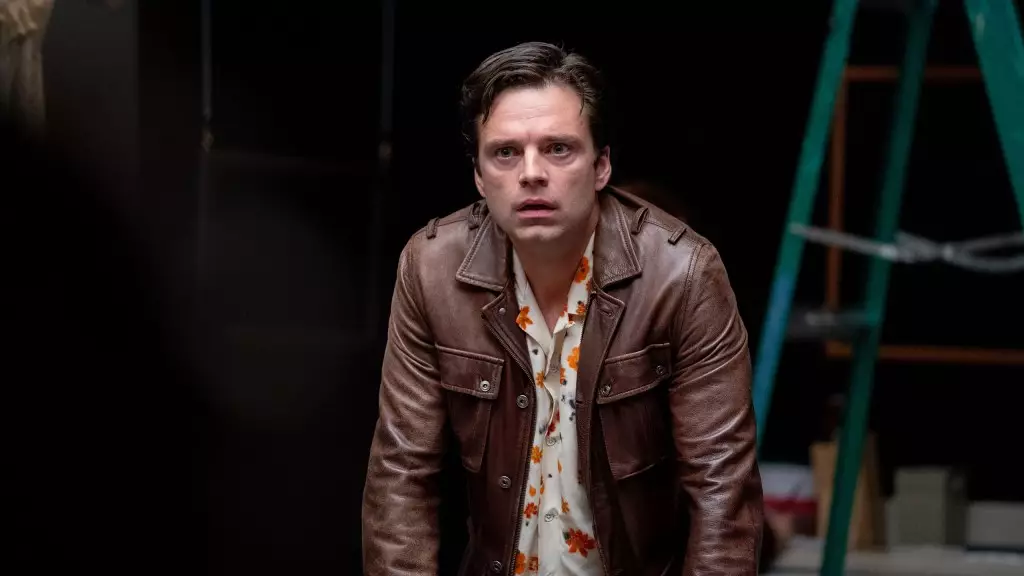When it comes to tackling weighty themes of disability, identity, and transformation, “A Different Man” directed and written by Aaron Schimberg, starring Sebastian Stan, Renate Reinsve, and Adam Pearson does not shy away from delving into the complexities of these topics. The film presents a poignant exploration of the clashes between outer perceptions and inner truths, shedding light on the challenges faced by individuals with visible differences. However, despite its noble intentions, “A Different Man” falls short in terms of tonal consistency and pacing, making the overall execution feel inconsistent and overlong.
The protagonist, Edward (played by Sebastian Stan), is an aspiring actor with facial deformities caused by neurofibromatosis. These deformities subject him to continued ridicule and isolation. Despite his self-consciousness and loneliness, Edward finds solace when he befriends Ingrid (portrayed by Renate Reinsve), his empathetic next-door neighbor and a playwright. Their friendship offers Edward hope, particularly when he learns about a risky reconstructive procedure that could potentially grant him a chance at a life free from judgment and staring eyes.
Driven by the desire for normalcy, Edward embraces the opportunity and undergoes the reconstructive procedure. However, the transformation he experiences only reveals the harsh truth that appearance alone cannot erase his past or bring him true happiness. This realization turns his world upside down once again when Oswald (played by Adam Pearson), a man similarly afflicted by neurofibromatosis, enters the picture. Oswald’s arrival stirs complex emotions within Edward, including guilt, regret, and envy. This encounter forces Edward to confront his own identity and question the nature of true transformation.
Edward’s physical transformation in “A Different Man” symbolizes the shedding of one identity to embody another. Beyond the mere change in appearance, the film highlights the need for Edward to reconceptualize his place in society. With a new face come new assumptions, expectations, and opportunities that clash with his inner sense of self. This reptilian-like evolution forces Edward to grapple with difficult questions about adaptation and the sacrifices one must make for acceptance.
As Edward navigates the disconnect between his outer appearance and his authenticity, he must ultimately determine what truly constitutes his essential self. The film challenges the notion that normalizing one’s appearance automatically grants respect, belonging, and human dignity. Oswald, on the other hand, embraces his visible difference with confident authority, both captivating and repulsing Edward. This contrast between the two characters underscores the film’s underlying message: our essence should transcend physicality.
Performances that Evoke Emotional Depth
Sebastian Stan’s portrayal of Edward is commendable, capturing the character’s emotional turmoil and trauma with vulnerability and nuance. His physical transformation serves as a powerful metaphor for Edward’s internal struggles. Meanwhile, Adam Pearson brings charm, confidence, and effortless authenticity to the role of Oswald, anchoring the emotional core of the film.
While “A Different Man” attempts to incorporate Toni Morrison’s novel “The Bluest Eye” as a narrative framework, the way in which it is utilized feels uncomfortable and out of place. Although the mention of the book raises awareness about its status as one of the most banned books in America, it fails to organically integrate into the story.
The film also suffers from uneven pacing, resulting in drawn-out scenes that lose momentum and dilute the emotional impact. Furthermore, the tonal shifts between psychological drama and thriller-esque suspense undermine the viewer’s investment in the narrative. These flaws, combined with elements of indie clichés and on-the-nose storytelling, bury the substance the film hopes to convey beneath layers of artistic pretension.
Ultimately, “A Different Man” falls short as a cohesive and satisfying film experience. While it explores important themes of appearance and identity, the execution is marred by inconsistencies in tone and pacing. Nevertheless, it is worth noting that the film’s message and inclusive approach may resonate with viewers who have personally experienced similar struggles with appearance and identity.

